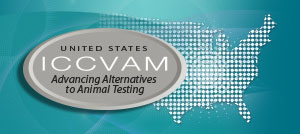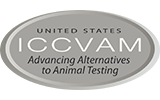NIEHS activities to develop new approaches for identifying potential cardiotoxins
Cardiotoxicity, or toxicity to the heart or cardiovascular system, is a major cause of failure of new drugs in mid- to late-stage development. Chemicals found in these drugs or in the environment may also contribute more broadly to human cardiovascular disease. The NIEHS Division of Translational Toxicology (DTT) conducts testing and research to determine potential human health effects of chemicals, drugs, food additives, dietary supplements, or environmental agents. Activities during 2022 and 2023 in the DTT’s Cardiovascular Health Effects Innovation Program focused on how environmental factors can affect human susceptibility to or development of cardiovascular disease.
- In vitro to in vivo extrapolation (IVIVE) was used to derive human-equivalent administered doses (EADs) from test chemical concentrations that induce effects in in vitro cardiotoxicity assays. These EADs were then compared with U.S. human exposure biomonitoring, prediction models, and data from geospatial mapping to prioritize chemicals for further study. Reports on this project (Krishna et al.) were presented at the 2023 annual meeting of the SOT and the 12th World Congress on Alternatives and Animal Use in the Life Sciences. A publication describing this work is in preparation for submission in 2024.
- In vitro assays representing a broad range of cardiovascular-relevant activities were used to characterize potential cardiotoxicity hazard of a group of chemicals including botanicals, flame-retardants, insecticides, polycyclic aromatic hydrocarbons, quaternary ammonium salts, and PFAS. A report on this project (Ramaiahgari et al.) was presented at the SOT 2023 annual meeting.
- Program scientists developed an interactive systematic evidence map to integrate data from human, animal, and in vitro studies of effects of environmental exposures on cardiotoxicity to support prioritization of future cardiotoxicity studies. A publication describing this systematic evidence map is in preparation for submission in 2024. A similar map was constructed to integrate data from human and animal studies on hypertensive disorders of pregnancy.
- In collaboration with the NCATS, the program is testing chemicals with potential vascular toxicity in human umbilical vein endothelial cells and in coculture and flow models.
Future activities include collaborative efforts with external cardiovascular researchers using various models such as tissue-engineered blood vessels and cardiomyocytes to evaluate potentially cardiotoxic chemical activity.



